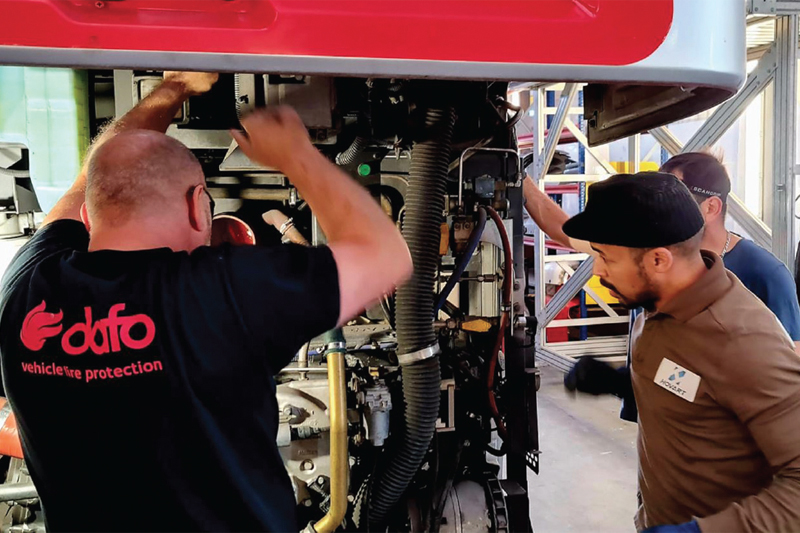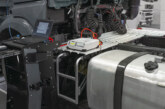
Should EVs become damaged, for example during a road collision, how they’re stored and monitored to prevent further risks is key. Tommy Carnebo, risk management specialist at Dafo Vehicle Fire Protection, explores the risks associated with storing damaged EVs and discusses what can be done to make sure further damage is minimised.
EVs are mostly powered by lithiumion (li-ion) batteries, which are an assembly of individual battery units (cells). These are connected to one another and monitored by dedicated electrical circuits. The size of these cells, and the arrangement of the cells, can vary between difference types of vehicles, which influences the voltage delivered by the battery, as well as the amount of electricity it stores (its capacity).
Regardless of the size or shape of the battery, should they become damaged in any way, li-ion batteries – therefore EVs – create a unique fire risk: thermal runaway.

Thermal runaway is a process whereby overheating, physical damage, overcharging and overvoltage can cause li-ion batteries to malfunction. That malfunction may lead to smoke emissions and large temperature increases across the battery’s cells. If not controlled quickly, this could lead to fire, toxic gas emissions – including hydrogen fluoride, carbon monoxide, carbon dioxide and cyanide – and potentially large explosions.

Once started, thermal runaway extremely difficult to stop using traditional fire suppression methods. As EV numbers rise, risks of thermal runaway have increased across the globe.

For mechanic workshops, recovery vehicles, first and second responders or any other business storing EVs after crashes and accidents, thermal runaway is a huge risk. As thermal runaway can develop quickly, for example overnight, when facilities are closed and EVs are unattended, having adequate fire detection systems in place is critical to maximise safety and minimise any damage to vehicles, surrounding valuable assets and the environment.

Despite these risks, traditional fire detection systems can only detect thermal runaway as the temperature increases. However, at this point, temperatures can often be beyond the point of no return. In addition, toxic gas emissions at this point can cause serious damage to the skin and respiratory tract for personnel within the vicinity of the EVs. Instead, an EV battery needs a fire detection system that detects whether a battery is in thermal runaway in its earliest stage by measuring the levels of carbon monoxide before the temperature increases. When EV accidents take place, damaged vehicles may need to be towed for long periods of time before they’re stored. This means a portable detection solution is required, which also means it can be easily applied and reused for vehicles, resulting in cost savings.

A detection system should continuously monitor damaged EVs for early signs of ventilation of gases, including carbon monoxide, which can lead to thermal runaway. Using strategically places sensors around the vehicle’s high-risk areas means that smoke emissions will be immediately detected, the systems will produce a loud signal, flashing lights and an email notification, to either:
- Alert workshop teams and tow truck drivers to risks, allowing them to take necessary action and precautions.
- Be connected to the site’s fire alert system, enabling first responders to take necessary action and precautions.

Adopting a new approach to fire safety for damaged EVs ensures detection systems can identify thermal runaway in early stages to reduce the EV quarantine and downtime after a collision; and create a safer work environment for teams and recovery drivers.








